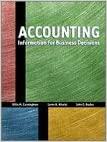Question
Question 5 The entry to record the cost of merchandise inventory sold involves a debit to Merchandise Inventory and a credit to Accounts Receivable. debit
Question 5
-
The entry to record the cost of merchandise inventory sold involves a
debit to Merchandise Inventory and a credit to Accounts Receivable.
debit to Cost of Goods Sold and a credit to Sales Revenue.
debit to Merchandise Inventory and a credit to Sales Revenue.
debit to Merchandise Inventory and a credit to Cost of Goods Sold.
debit to Cost of Goods Sold and a credit to Merchandise Inventory.
1 points
Question 6
-
Accumulated depreciation is classified as a(n)
liability account.
contra asset account.
contra liability account.
asset account.
equity account.
1 points
Question 7
-
Which of the following accounts are expected to have a credit balance? 1. Cash 2. Salary Expense 3. Retained Earnings 4. Accumulated Depreciation 5. Sales 6. Prepaid Rent 7. Accounts Payable
Cash, Retained Earnings, Accumulated Depreciation, Prepaid Rent, Accounts Payable
Cash, Salary Expense, Prepaid Rent
Cash, Retained Earnings, Sales
Retained Earnings, Accumulated Depreciation, Sales, Accounts Payable
Salary Expense, Accounts Payable, Accumulated Depreciation
1 points
Question 8
-
Given the following balances, what would the total debits in the trial balance equal? 1. Equipment $52,000 2. Accounts Payable 1,000 3. Sales 51,000 4. Accumulated Depreciation 3,000 5. Accounts Receivable 4,000 6. Retained Earnings 13,000 7. Salary Expense 4,000 8. Cash 12,000 9. Paid-in Capital 10,000 10. Cost of Goods Sold 25,000
$ 97,000
$103,000
$ 52,000
$107,000
$101,000
1 points
Question 9
-
Browse Books, Inc., received and paid its utility bill of $250. As the accountant, you would tell the bookkeeper to
debit Cash and credit Utility Expense for $250.
debit Cash and credit Utility Payable for $250.
debit Utility Receivable and credit Cash for $250.
debit Utility Expense and credit Cash for $250.
debit Cash and credit Retained Earnings for $250.
1 points
Question 10
-
A company began operations and purchased $5,000 of supplies. By year-end, $3,200 were still on hand. The year-end entry would include a
credit to Supplies Expense for $1,800.
credit to Supplies Expense for $3,200.
debit to Supplies Expense for $1,800.
debit to Supplies Expense for $3,200.
debit to Supplies for $5,000.
Step by Step Solution
There are 3 Steps involved in it
Step: 1

Get Instant Access to Expert-Tailored Solutions
See step-by-step solutions with expert insights and AI powered tools for academic success
Step: 2

Step: 3

Ace Your Homework with AI
Get the answers you need in no time with our AI-driven, step-by-step assistance
Get Started


